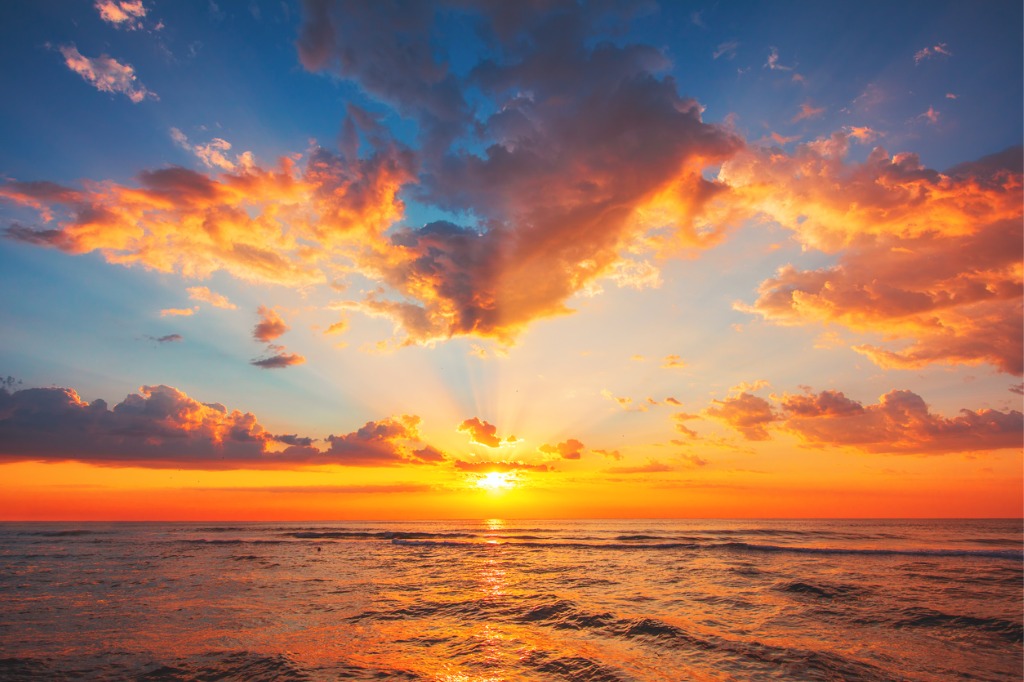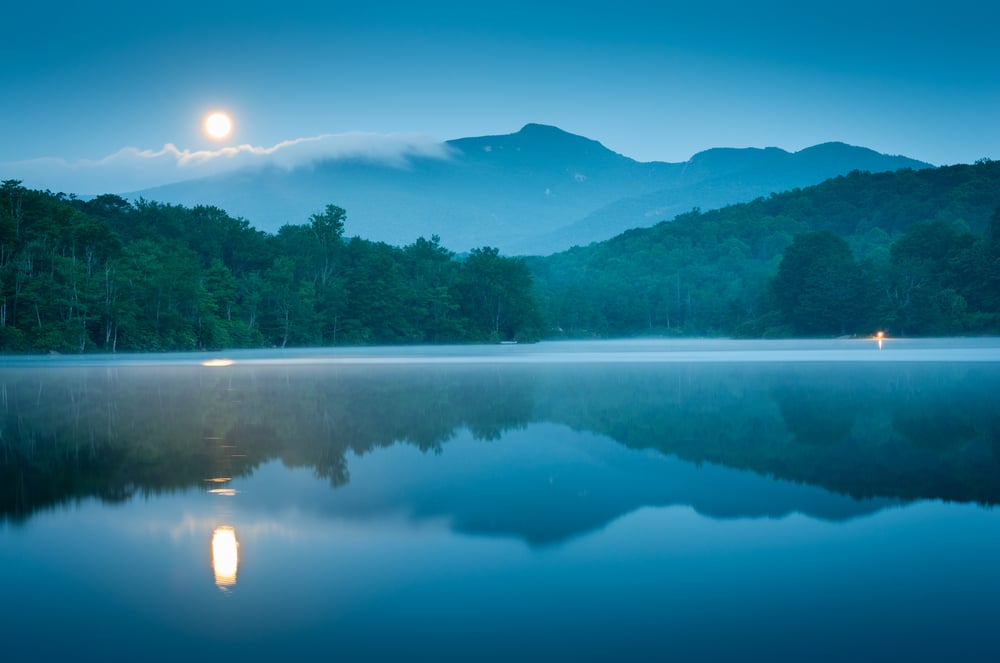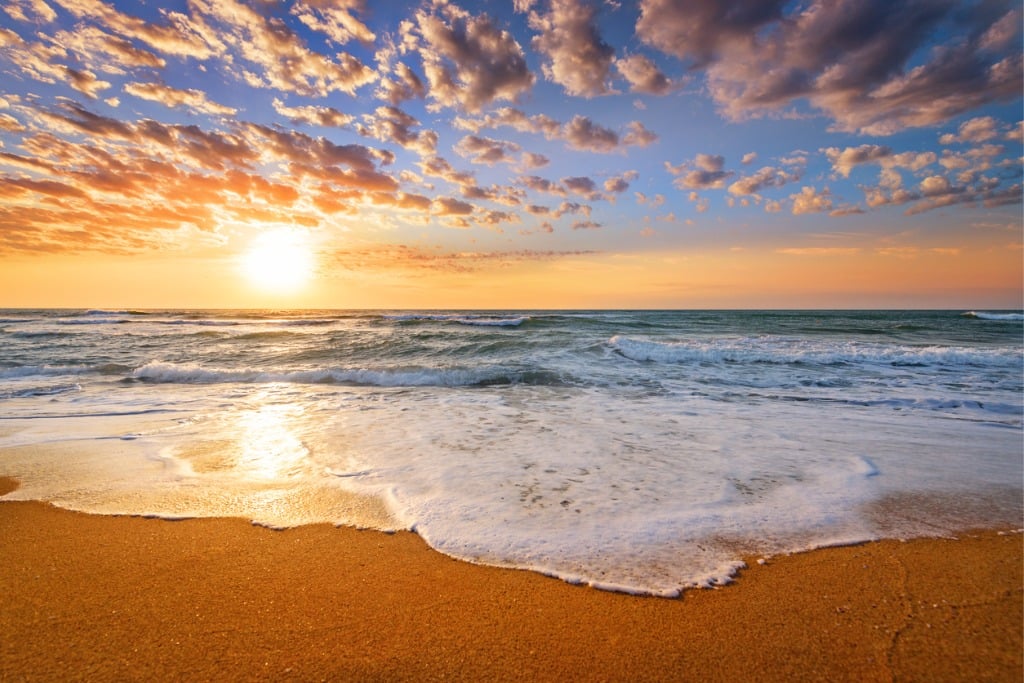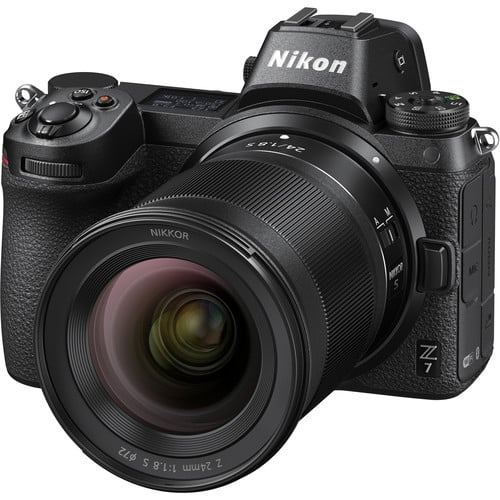4 Essentials for Hiking Photography
- Describing Hiking Photography
- Hiking Photography Gear Needs
- Hiking Photography Weather Protection
- Hiking Photography Backpack or Camera Bag?
- Hiking Photography Tips and Hints
- A camera mount.
- A good camera strap.
- Some weather protection.
- A hiking photography backpack.
- How To Stabilize a Camera when You Don’t Have a Tripod
- How To Pack Light for a Photography Trip
- Compact Photographic Items Useful for Traveling
- Get Better at Landscape Photography
- Versatile Camera Gear You Need In Your Bag
- Essential Tips for Photography While Hiking
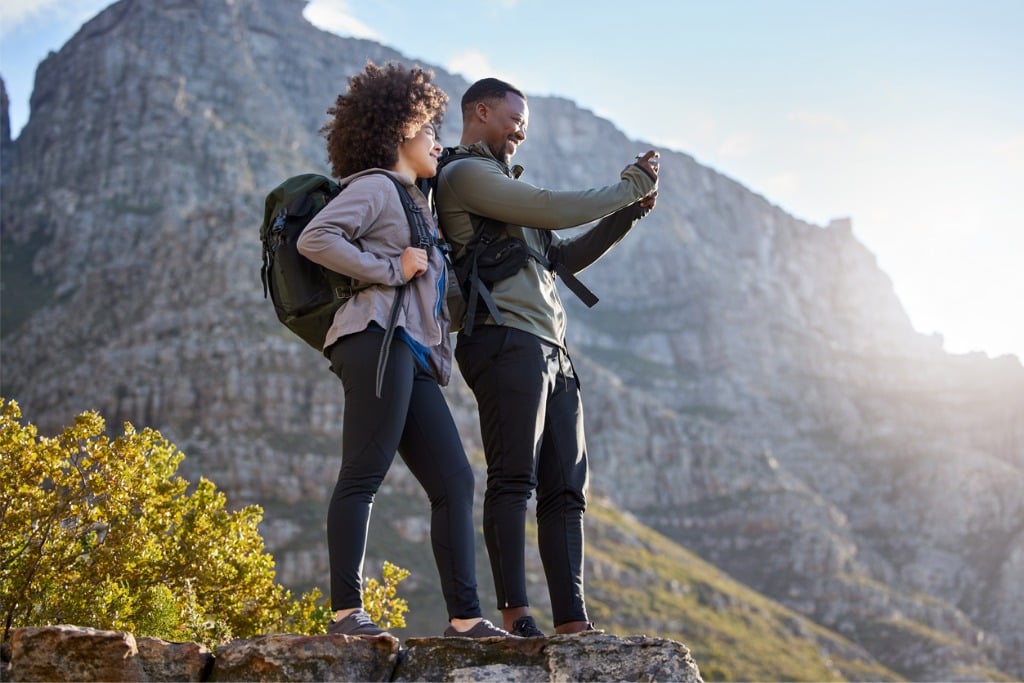
Photo by PeopleImages via iStock
Outdoor photography comes in various levels. One of the most accessible forms of outdoor photography for those of us who love nature is hiking photography.
What is hiking photography, how can we improve our hiking photography, and what hiking photography gear is beneficial for outdoor photographers? Keep reading; we’ll cover all of that and more!
Table of Contents:
Describing Hiking Photography

Photo by jacoblund via iStock
We’ll start today’s journey by describing hiking photography. For starters, hiking photography is done outdoors, or at least accessed from the great outdoors.
To me, hiking is walking around in nature, but it’s not simply aimless wandering. When I’m hiking, I usually have a destination in mind, a place I’m going to with the idea of seeing and capturing something interesting or beautiful in camera. Sometimes, the trail itself is pretty much the destination, perhaps having all sorts of things to see while on it. Oftentimes, it’s a mix of both situations.
Hiking photography, taking things literally, is anything I do photographically while hiking. That could include selfies and a group portrait. But, like most of us, I tend to think of the scenes I’m accessing as the most important part of hiking photography.
Hiking photography can be done year-round and in a wide variety of locations. I can engage in hiking photography while camping in the mountains, while with family and friends at the beach or lake, or in a local park or nature center near my home.
If urban landscape is your thing, walking around while doing that could also be said to be hiking photography. But, I think most people would agree that a nature walking excursion, camera in hand, is a good description of hiking photography.
Hiking Photography Gear Needs
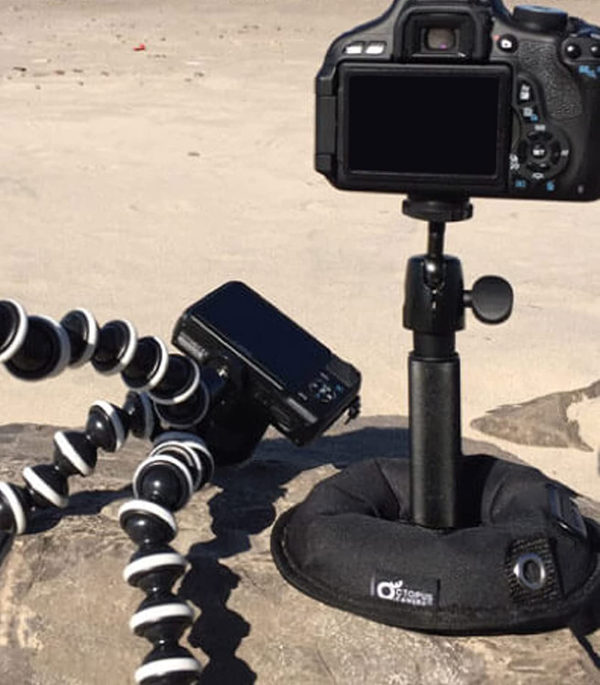
Hiking photography gear includes our camera and lenses, plus some other items that will help us get our photos and some that will help protect our gear. Besides our camera setup, the hiking photography gear I think of are:
A compact, versatile, and inexpensive way to hold a camera is the Octopad Camera Mount. What makes the OctoPad useful as hiking photography gear is that it is a tripod alternative that really works. Being inexpensive means I can have several of them always ready to go.
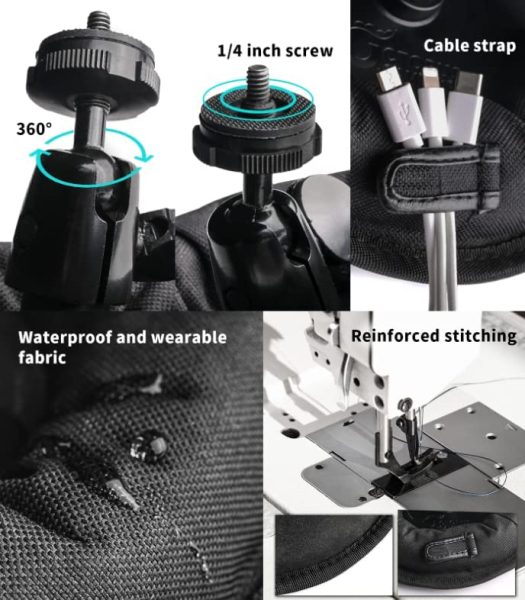
Octopad is a semi-rigid disk made of heavy-duty material that has a non-slip pad on the underneath side and a tripod screw on the top side. Attached to the top screw is usually a ball head, but you can add an extension arm between the two if needed.
The non-slip pad is what really makes Octopad useful for hiking photography. Since the disk is relatively compact, you can carry it easily. It’s low profile and can be put anywhere on a wide range of surfaces. The non-slip pad securely holds a camera and lens on surfaces that might even be angled up to 45 degrees.
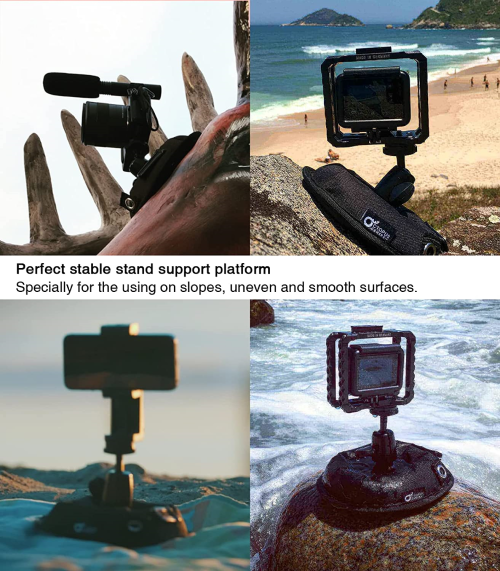
I use my OctoPad for steadying my camera for macro or other close-up shots, when using a telephoto lens, when I’m trying out special techniques such as long exposure photography, and if I want to take a selfie or group portrait while on the trail. It really is valuable for nature or hiking photography.
A great strap is vital for most of us having fun with hiking photography. Those skinny straps that come with the camera or are simply an advertising banner are inadequate for my needs and wants.

I use a sling strap that attaches to the tripod screw hole on the bottom of my camera. BlackRapid RS-4 Sling Strap is a classic winner. I can wear it slung across my body or on either shoulder, though I prefer the cross-body sling method for safety and versatility.
It’s made from 100% nylon, so it’s good for any weather and is very comfortable. The sling style is already a more comfortable carry solution than the strap in the camera box, and the RS-4 adds a foam shoulder/neck pad. The camera attaches and releases rapidly and securely, plus the length of the strap is adjustable for your specific comfort and need.
Learn More:
Hiking Photography Weather Protection
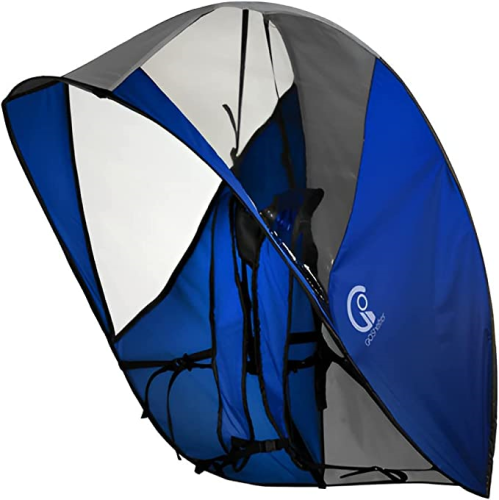
When outside, you are at the mercy of the elements. Sometimes that could mean wind, rain, blowing dust, blowing sand, blowing snow, or spray from waves at the beach or a waterfall. Those could actually all happen on the same hiking photography outing!
My recommendation for how to protect your camera from rain, wind, salt spray, and so on is the GoShelter Self Canopy. I think of it as a lean-to or an awning that fits on me. It gives excellent protection from all sorts of weather, rain, snow, blowing dust, or water spray from the ocean or waterfalls.

A great feature of the GoShelter for hiking photography is that nothing touches the camera or impedes your operation of it. You’re standing inside the shelter, and you can use the camera as you normally would in portrait or landscape orientation. I have one in the camo pattern and also a bright safety orange version for when doing hiking photography in urban surroundings or during hunting season.
Here’s how the GoShelter works: you unfold it from its compact collapsed mode, attach it yourself as you would a backpack, and then walk around and take photos as you normally would. It’s deep and offers protection from the elements on three sides and above you without obstructing your view to the front. Even a heavy downpour of rain is easily handled with this awesome item of photography hiking gear.
At the moment, you can use our coupon code PT1Umbrella to get $15 off your order, too!
Hiking Photography Backpack or Camera Bag?
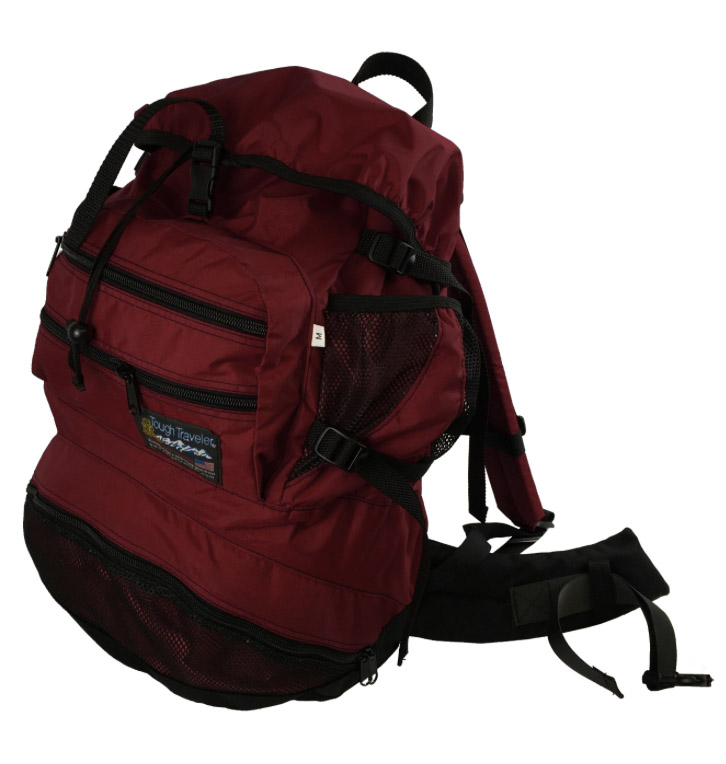
You are likely to be carrying more than one lens, maybe more than one camera, plus the other hiking photography gear you want along with you, so a backpack or bag of some type will be needed.
I have two recommendations. One is a hiking photography backpack. The other is a sling-style camera bag. Both are roomy, offer protection for your gear, and are comfortable and easy to use.
The made-in-the-USA Tough Traveler Super Padre Ergonomic Backpack shown above and below is a great option for hiking photography. On the one hand, it has a large internal compartment where you can keep your extra lenses and other accessories. On the other hand, you can add a camera mount to one of the shoulder straps to have your camera at the ready for quick shots.
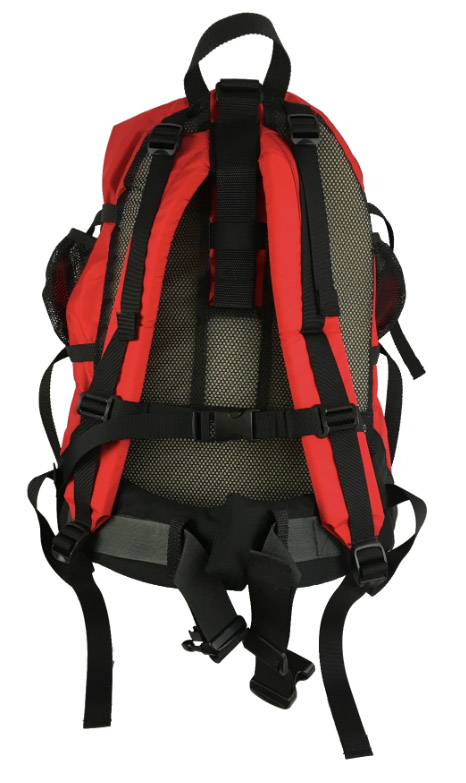
What I like about having a backpack like this is that you can carry a lot of gear in total comfort. The Super Padre has thickly padded shoulder straps and a padded waistbelt to stave off shoulder pain. The internal frame helps transfer the weight of the load to your hips, too, which helps keep back pain at bay.
I also appreciate that the bag has a height-adjustable back, a sternum strap, and various compression and control straps so you can tailor how the bag fits your body. Add in multiple pockets - including a bottom mesh pocket for wet items like your rain jacket and two water bottle pockets - and you have the makings of a well-designed, functional bag for your hiking adventures!
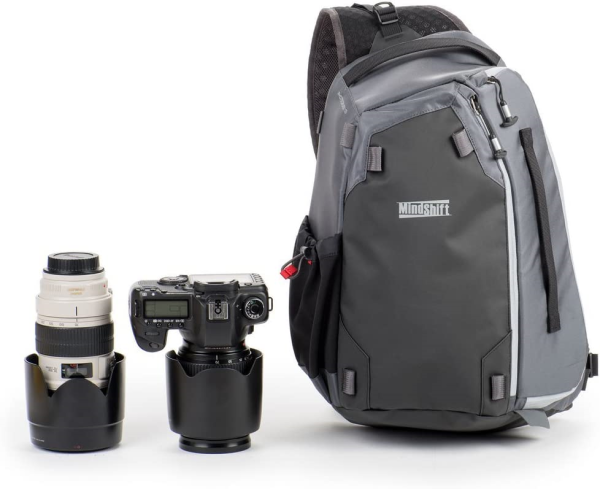
If you don't need all the space a backpack provides, the MindShift Gear Photo Cross Sling Bag is a good choice for carrying a moderate amount of hiking photography gear.
The sling style makes getting your stuff in and out of the bag simple and very quick. You can pile a large camera and several lenses in it along with your extra gear.
Hiking Photography Tips and Hints
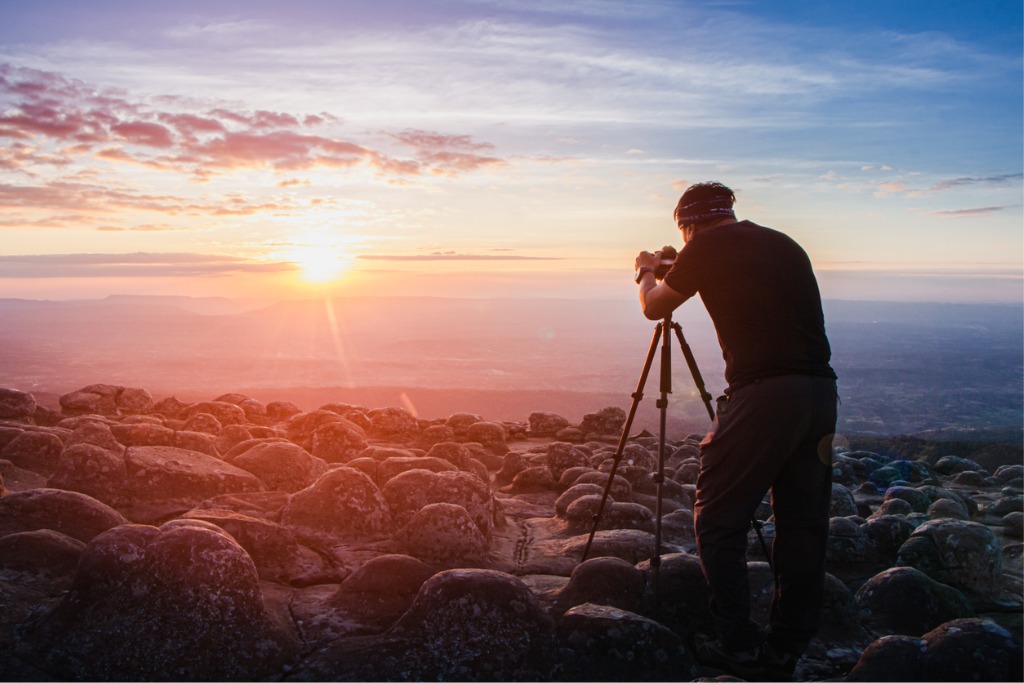
Photo by Anusak Rojpeetipongsakorn via iStock
Some other hiking photography tips and hints I’ve learned through the years are to be safety conscious, be comfortable, and be ready for anything. Always let someone else know your itinerary if you're hiking solo or as a small group and have a fully charged phone on you. A light, a multi-tool, and a space blanket are excellent accessory items to have on you.
I dress for the weather I’m expecting and for what’s possible. A trip to your local favorite outdoorsy store is in order if you’re just starting out in hiking photography or if you need to replace any of your existing hiking photography gear. Good shoes or boots are essential, and there are many options for rugged and versatile outdoor clothing. Don’t forget sunglasses or a hat!
Finally, you want to pack light but still be as prepared as possible for those fantastic photographic opportunities that always just seem to pop up unexpectedly. A filter kit, remote release, and a portable light seem to find a way to get used if I have them with me.
Whether you’re out in the untamed wilderness or nearby in a local nature trail, have fun with your hiking photography. Let us see your photos! We have a forum for sharing and discussing at Photography Talk.

